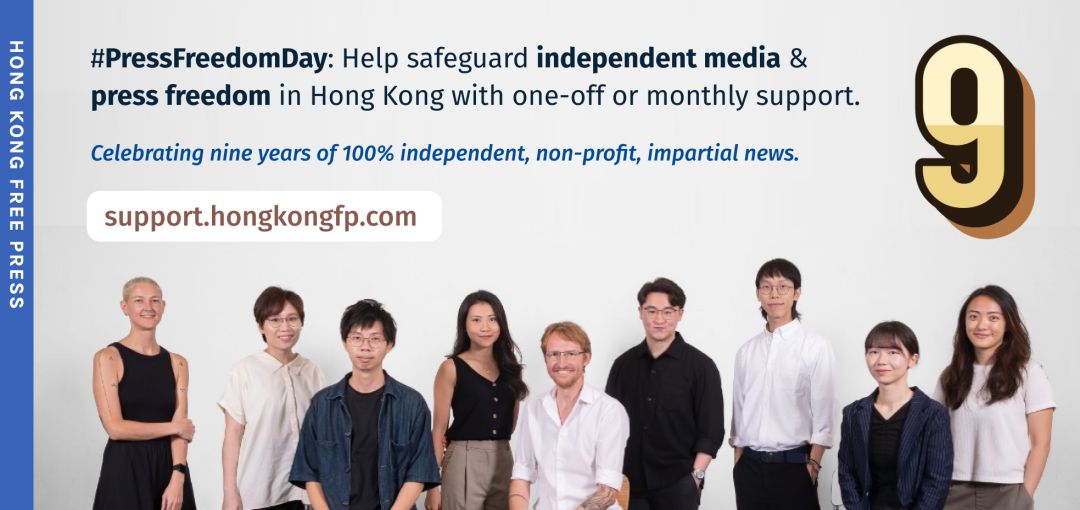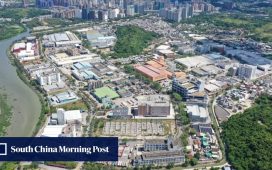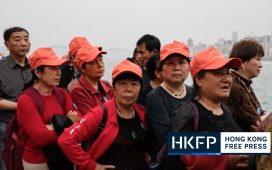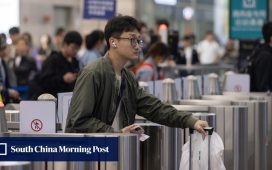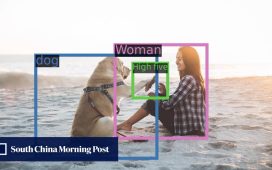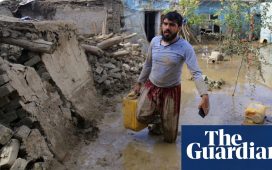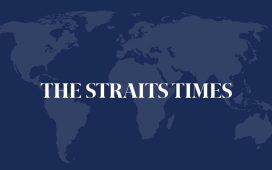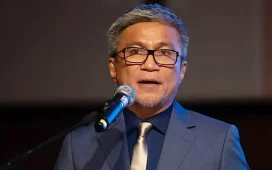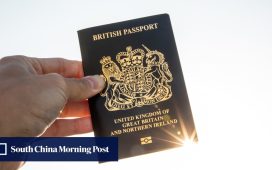Since moving into a flat in the heart of Hong Kong’s century-old Flower Market, Joyce and her husband Spencer have become big fans of the Kowloon community.
The market boasts more than 120 ground-floor flower stores, spanning four streets between Prince Edward and East Mong Kok, with most buildings less than 15 stories high.
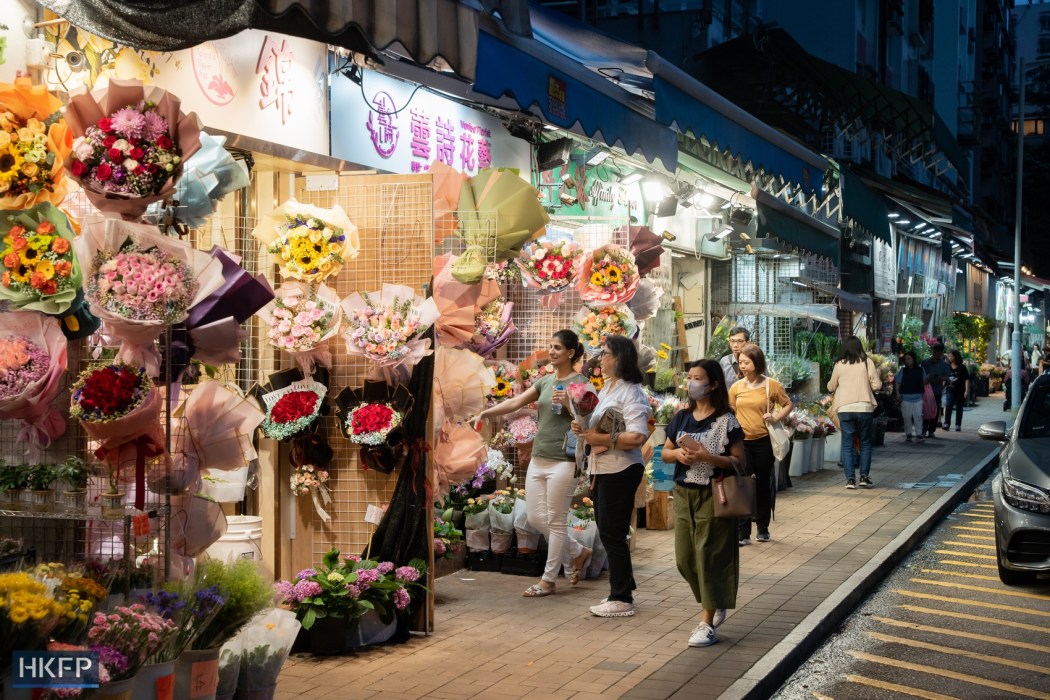
Across from Flower Market Road is a park with towering trees, a shady lane called the Flower Market Path, and sports facilities. “That’s the view from our window. We fell in love with it instantly once we saw it, and decided to purchase the apartment in 2021, ” Joyce said in Cantonese.
“We often wake to the chirping and singing of birds in the park, and just like us, neighbours walk their dogs along the lane at night.”
Now the vibrant community is under threat, after the city’s Urban Renewal Authority (URA) in March announced a large-scale redevelopment scheme for Sai Yee Street and Flower Market Road. The most eye-catching proposal is restructuring the Flower Market Path, once a smelly nullah which was covered over in 2008, to build a “waterway park.”
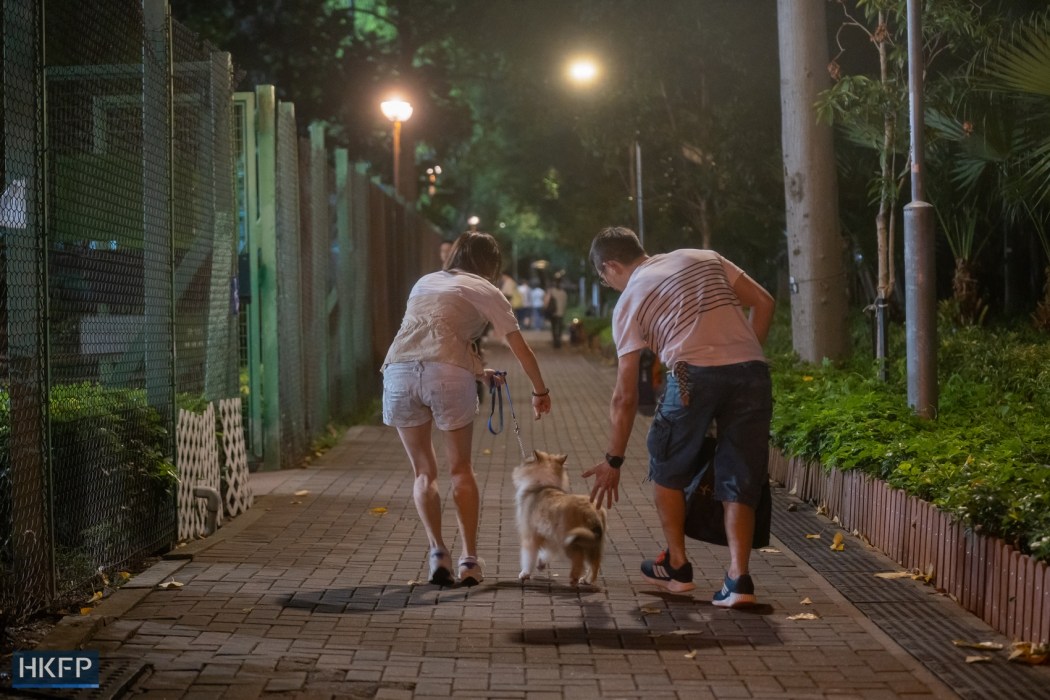

But the proposed redevelopment covers much more than this. According to a 500-page development scheme, the URA proposes acquiring around 22 buildings in the community, a move which would affect 35 ground-floor stores and a church and 275 households. It then plans to “transfer” the plot ratio of these older and low-rise buildings to develop high-rise properties on nearby sites.
The scheme entails the construction on Site B, currently occupied by the park and sports facilities, of two 31-floor residential buildings, and a commercial building which could be a hotel, office space or service apartments. The existing sports facilities, including a football field, will be relocated to the podium level of the private residential estates.
Several hundred metres away on Site A, another two high-rise residential blocks, each of 38 floors, will go up after the demolition of old buildings and dozens of flower stores along Sai Yee Street. The podium of these two apartments will serve as a five-storey shopping mall.
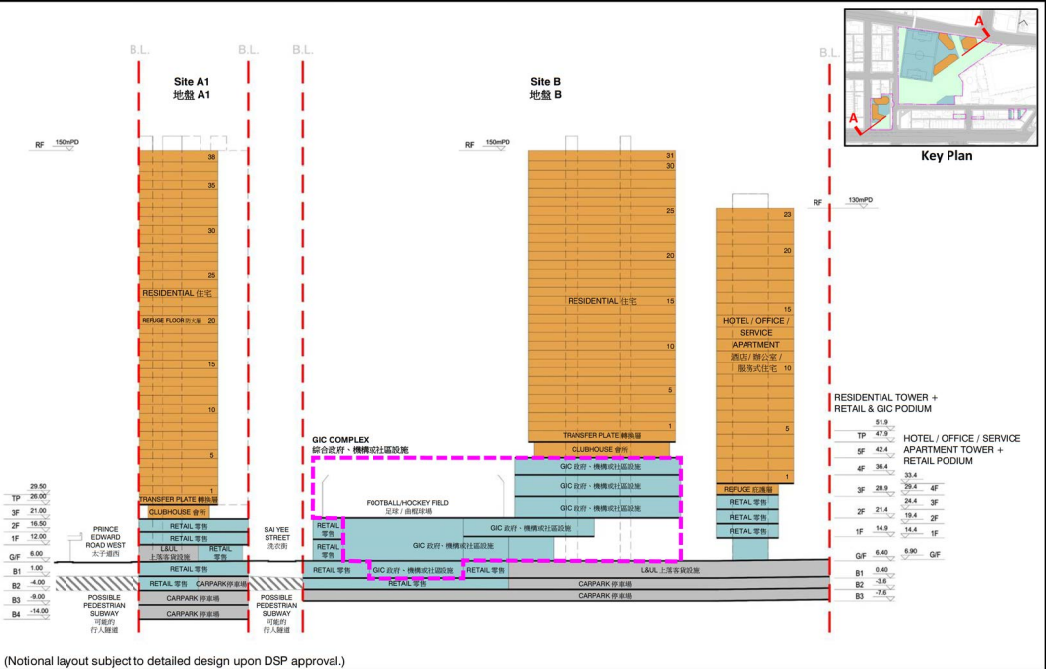

The scheme has come under fire from a former chief executive Leung Chun-ying and other pro-establishment figures who say it takes the bloom off the market’s unique culture, and a civic group has questioned why public land would be grabbed for commercial development.
The URA says the aim is to boost vibrancy of the market and solve traffic problems by building car parks in new buildings, but there is no guarantee that the 33 flower sellers affected by the scheme will be allocated new stores when the development is completed. The remaining 90 shops are allowed to stay where they are.
The redevelopment, if approved by the government, will take ten years. By around 2035, it will provide 1,354 new flats, accommodating an estimated 3,975 people.
In response to HKFP, the URA said that 89 per cent of all of the land to be developed is public land, while 11 per cent accounts for private lots. It stated that introducing a better diversity of shops and more residents “will effectively contribute to enhancing business opportunities for operators. “
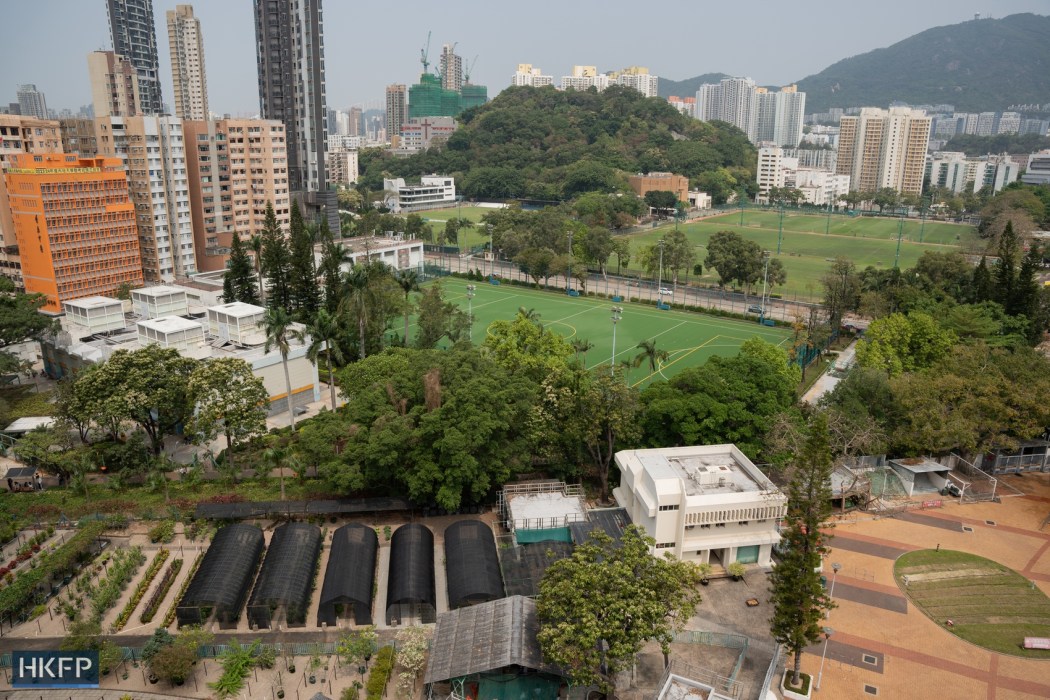

“[The district] has been facing multiple prolonged local issues, including aged recreational facilities with segregated functionality and spaces, lack of cohesive leisure and resting spaces, as well as traffic congestion and chaos in the Flower Market area,” URA has said.
The proposals have shocked Joyce and Spencer. Owner’s Corporation of their apartment held a meeting on Thursday, with all members rejecting the URA’s scheme, Joyce said.
“We don’t mind redeveloping old buildings to improve the living environment, but why did they acquire such a large percentage of public land – which is now our park – to bring in commercial properties? ” Spencer said in Cantonese.
“Does Hong Kong still need so many shopping malls and hotels? Will the Flower Market become another project like Lee Tung Street?”
Is the URA, he asked, “utilising public resources to cover its costs and make ends meet?”
‘Authority for large-scale mansions‘
Established in 2000, the URA is tasked by the government with redevelopment, rehabilitation, preservation and revitalisation of selected areas. It was granted powers to propose planning, to compulsorily purchase land from private owners and sell land to developers. The body is not charged a land premium on its redevelopments.
Apart from initial government funding of HK$10 billion, the URA must be financially self-sustaining in long term. Over the past two decades, it has been accused of neglecting the needs of local communities, and transforming places full of culture, history and public memory into homogenous shopping malls and high-end residential estates.
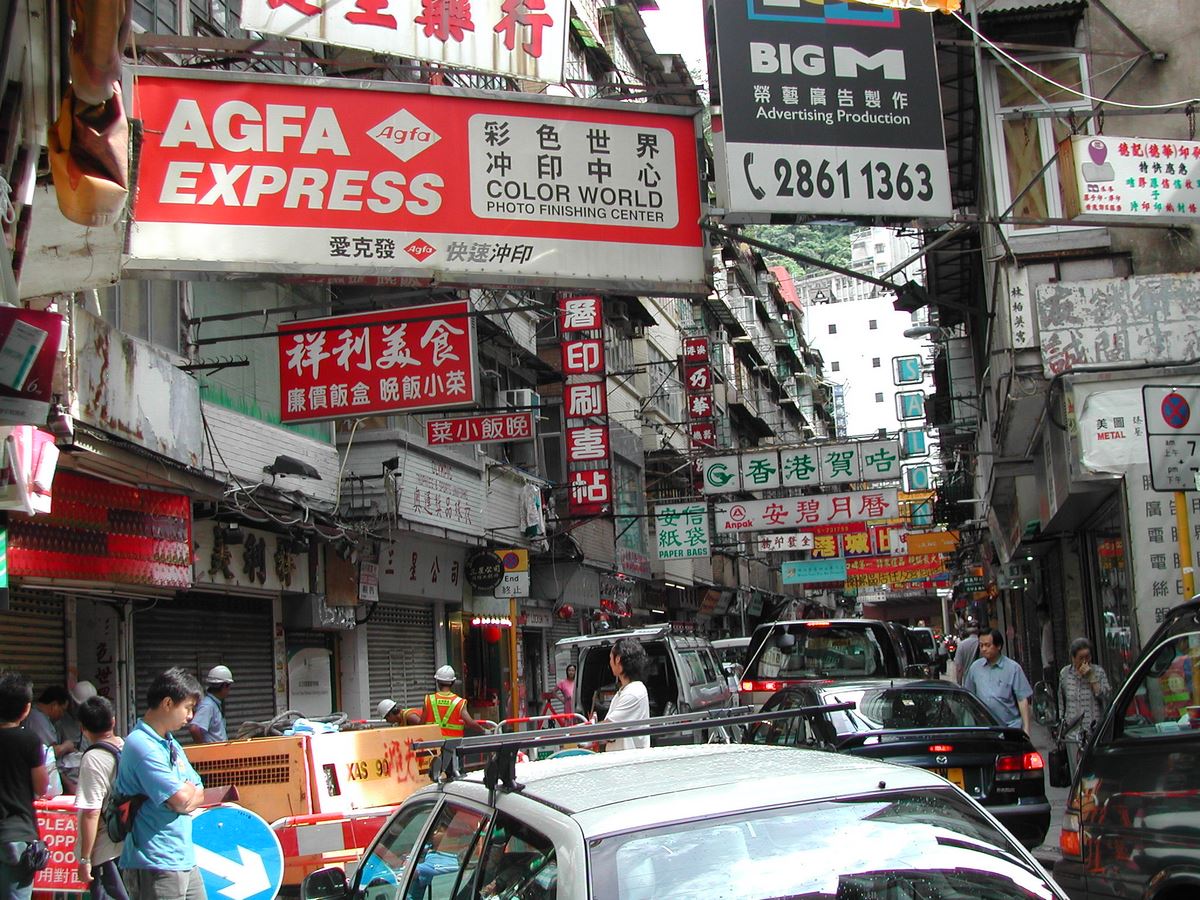

Lee Tung Street in Wan Chai, widely known as Wedding Card Street, was one such controversial URA project. Starting from 2004, residents and businessmen formed a concern group H15 to protest against plans to redevelop the historic street famous for printing wedding cards. The concern group’s proposals were rejected by the URA and the Town Planning Board.
The redevelopment eventually introduced four high-rise apartments and a low-rise shopping mall developed by Sino Land and Hopewell Holdings. These blocks are now called the Avenue, with most shops being large chains.
Ng Mee Kam, professor of Urban Studies at the Chinese University of Hong Kong, told HKFP that Hong Kong’s redevelopment projects were a new instance of land enclosure – which refers to the appropriation of “waste” or “common” land which deprives commoners of access rights.
“Redevelopment has become a tool for land enclosure – changing the space that looks indecent into something for sale. This kind of land enclosure did not just happen in Hong Kong, but all around the world, ” Ng said in Cantonese.
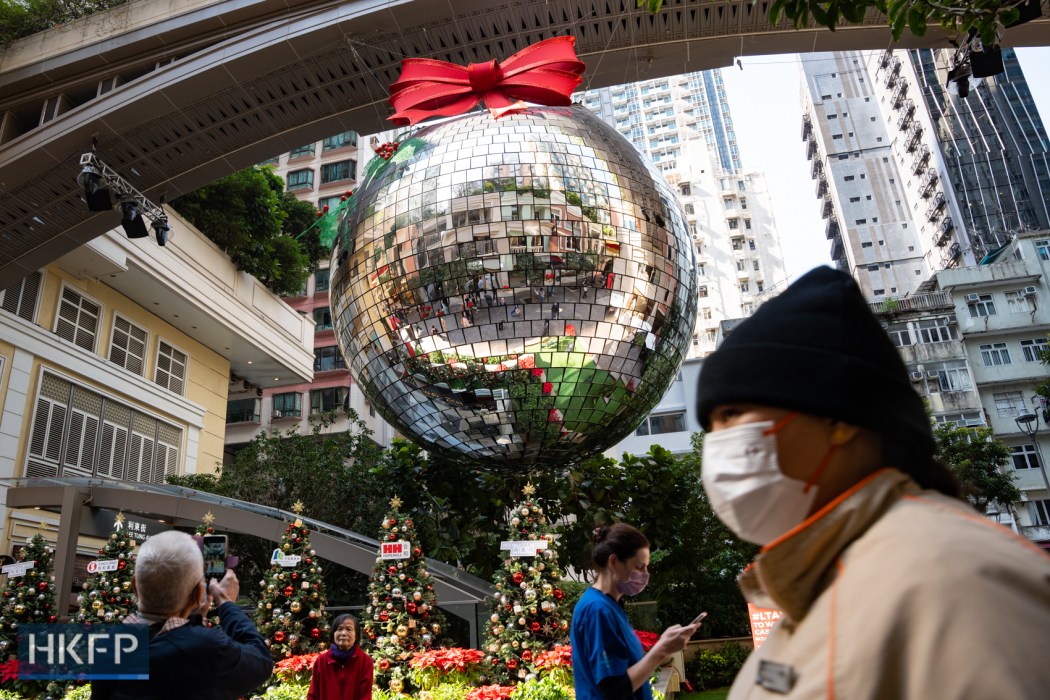

Following the announcement of the Flower Market redevelopment scheme, Mathias Woo, a pro-establishment figure and an artist, said in an op-ed published by HK01 that the URA has become “an authority for large-scale mansions.”
“What the URA does is acquire old buildings, demolish them, and build new shopping malls and mansions on the site, without any community characteristics,” Woo said. “Hong Kong’s urban renewal is simple. It’s like buying some apples for 10 dollars, juicing them, and then selling them for 2,000 dollars.”
‘Encroaching’ on public land
Chan Kim-ching, a researcher with the development policy think tank Liber Research Community, told HKFP that the Flower Market redevelopment was not simply about buying and selling, but a new model of grabbing public land for commercial development.
Chan said the URA – in a separate project in Kowloon City – had demonstrated how to “consume public land” by incorporating the public market into part of the Carpenter Road Park, and developing the original market site into private residential estates.
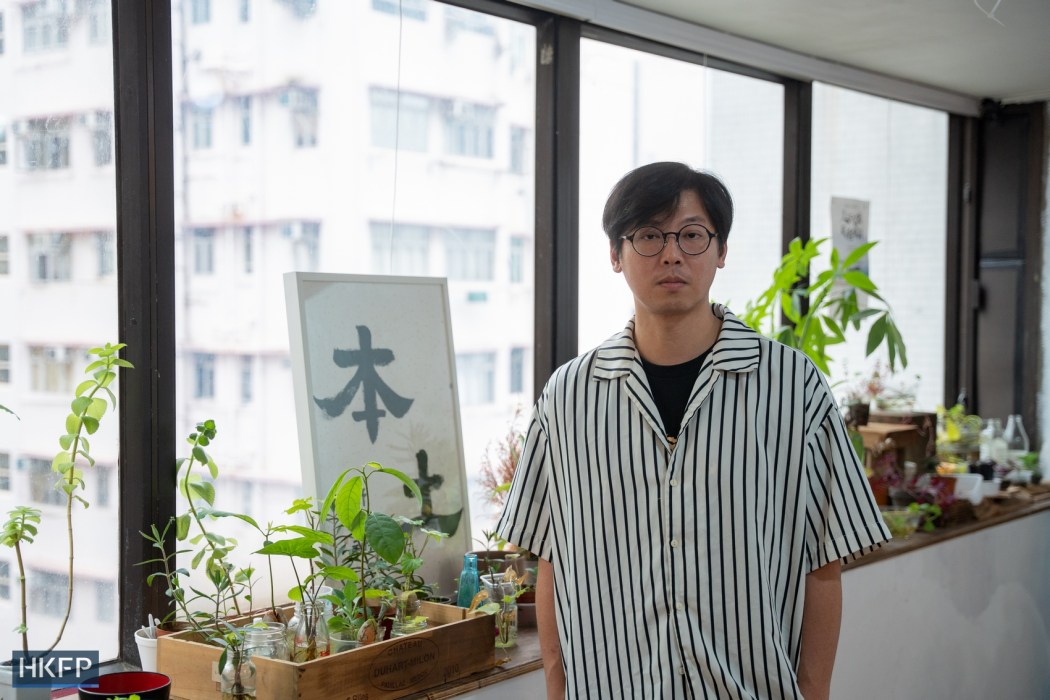

“The park [in Kowloon City] became storage space, freeing up prime land for further development, ” Chan said, “but when it comes to the Flower Market, it directly acquired part of the park, and made it prime land for apartments and a hotel.”
According to the development scheme, Site B, all public land, currently consists of the existing park, a public toilet, a refuse room, sports facilities and a plant nursery, which covers an area of 24,870 square metres.
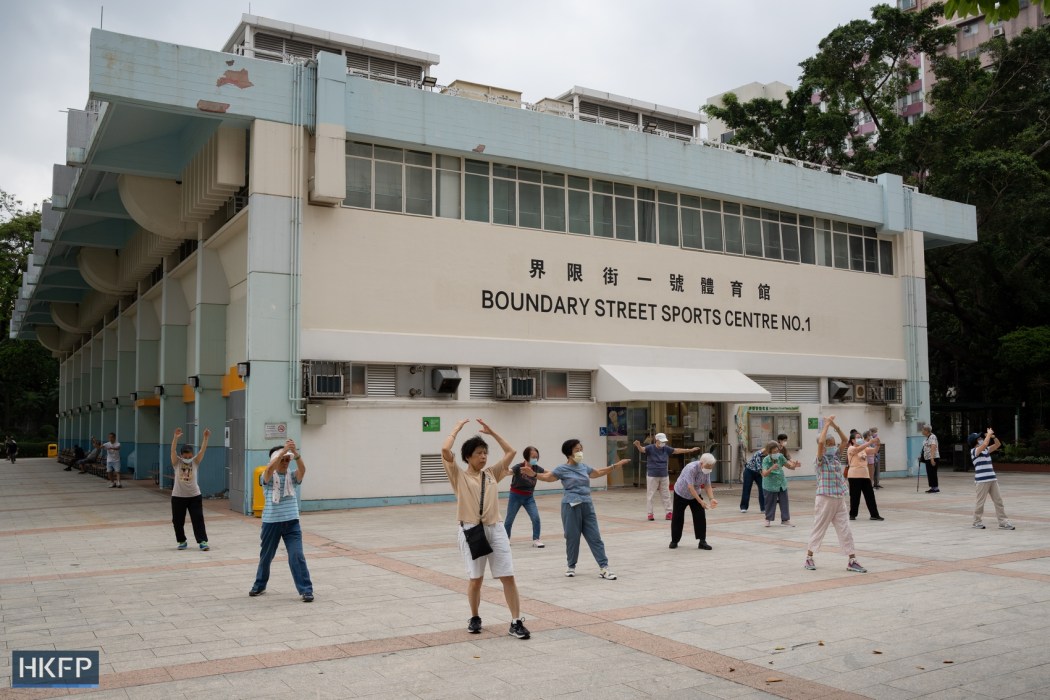

Once the redevelopment is complete, the site will feature a commercial building, two high-rise apartments, and a multi-purpose complex to accommodate community facilities built in the podium level of the high-rises. The football field will be allocated to the podium level as well.
“This is prime land created by the URA, because it has the power to encroach [upon] public land,” Chan said. “In the future, the high-rise residential buildings will enjoy nice views, with one side over looking the football field, one side overlooking the waterway park, and one side overlooking the grassland of the Police Sports and Recreation Club. How could you find such a site in Mong Kok?”
In its response to HKFP, the URA said that – while there is currently 15,800 square metres of open space at Site A and Site B, such areas will be increased to 17,000 square metres after redevelopment.
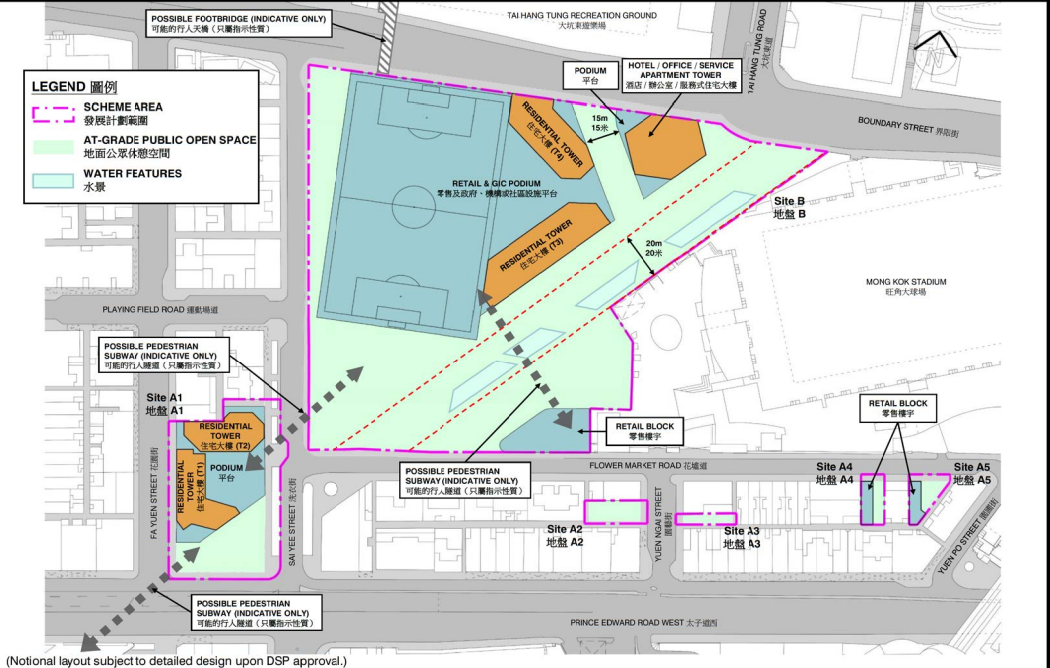

However, only 9,600 square metres of open space will be provided at ground level, with the remaining space at podium level.
The professor Ng said that – while URA usually “returns” public open space at podium levels of high-rises – ground-floor open space is more beneficial to the community as it is easily accessible to everyone, offers breathing space in densely populated areas, and facilitates air ventilation.
Growth driven
Mo Kar-him lives on Flower Market Road, just a few blocks from Joyce and Spencer. His own flat in a 50-year-old apartment will not be affected but he is concerned by the planned rise in population density in the district.
“I didn’t expect a site for government, institutional and community facilities to become a commercial site,” said Mo, a professor of architecture and urban studies who has been living in the community since 2005.
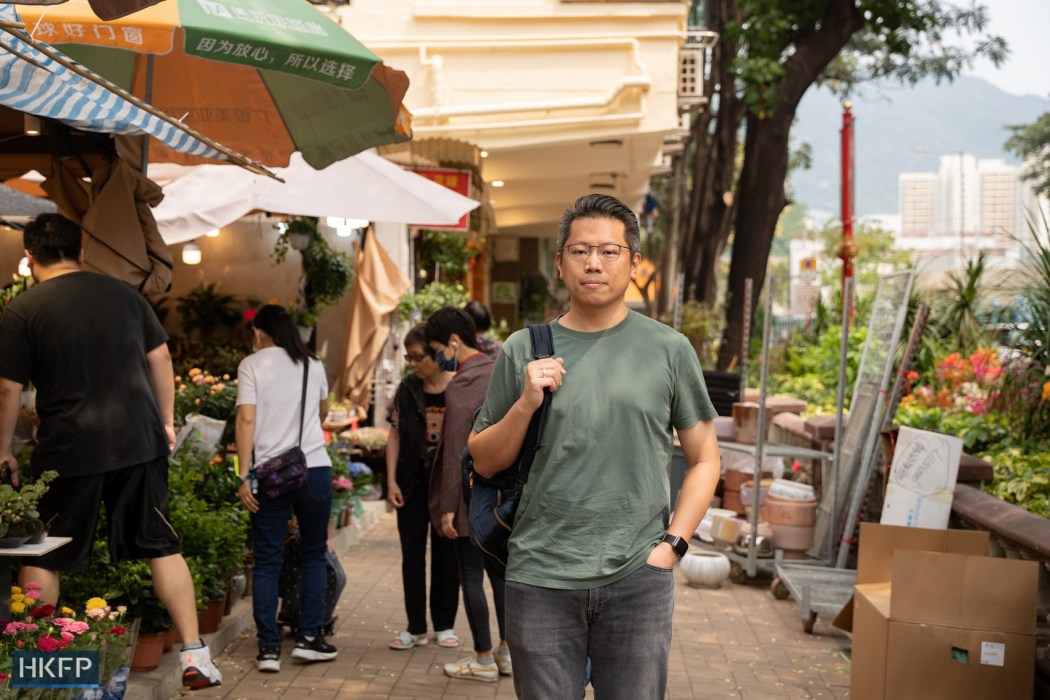

The development scheme for Sai Yee Street and Flower Market Road is the first project under a broad URA initiative to redevelop much of Yau Ma Tei and Mong Kok – old, generally working class, diverse, areas. It began research on the initiative in 2017 and released study results in early 2022.
Three density scenarios are presented, which are “+, – , 0”, referring respectively to growth, maintenance, or reduction of gross floor area based on the districts’ Outline Zoning plan.
The URA chose the model of “+” in the end, which aims at significantly increasing the gross floor area in the district through more buildings or higher floors.
“Why are they increasing the gross floor area? That is related to their budget. Now the URA is short of money, and it has to make money out of selling land and building things,” Mo said in Cantonese.
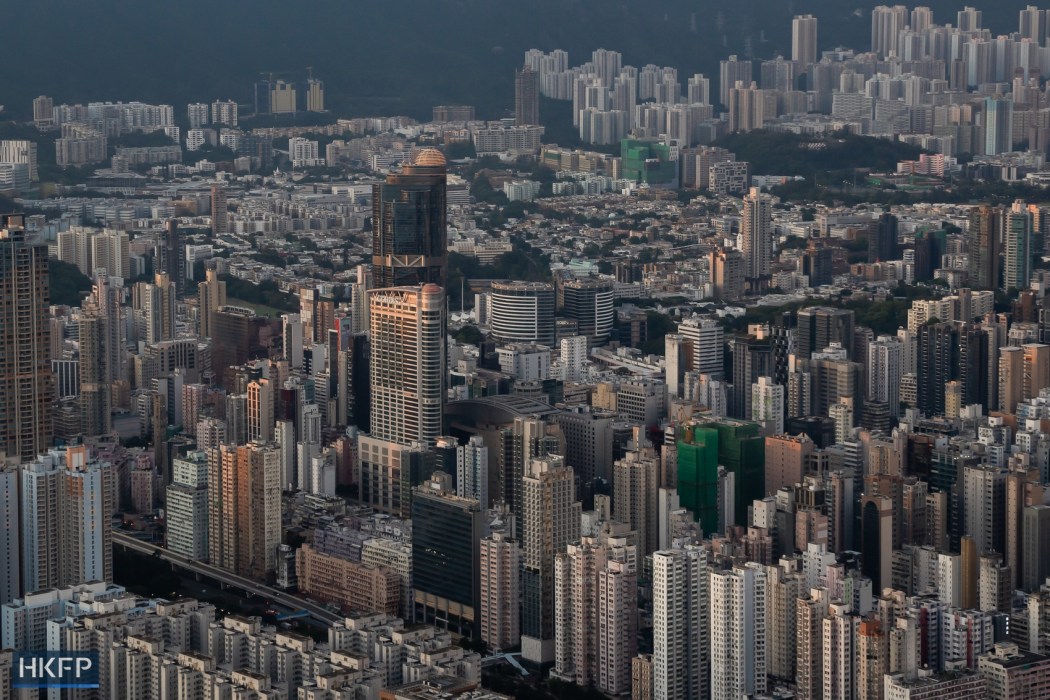

The authority’s managing director Wai Chi-sing said in early March it expected to spend HK$80 billion in the coming five years to acquire property rights in multiple redevelopment projects. However, its current cash flow was HK$18 billion, which put “financial pressure” on the authority.
Mo said the redevelopment proposals for Yau Me Tei and Mong Kok were based on old and possibly outdated assumptions.
“When they were studying the plan a few years ago, the assumption was that the economy of Hong Kong was good, that everyone wanted more commercial space – because we hadn’t seen vacant commercial buildings and developers refusing to buy land,” Mo said.
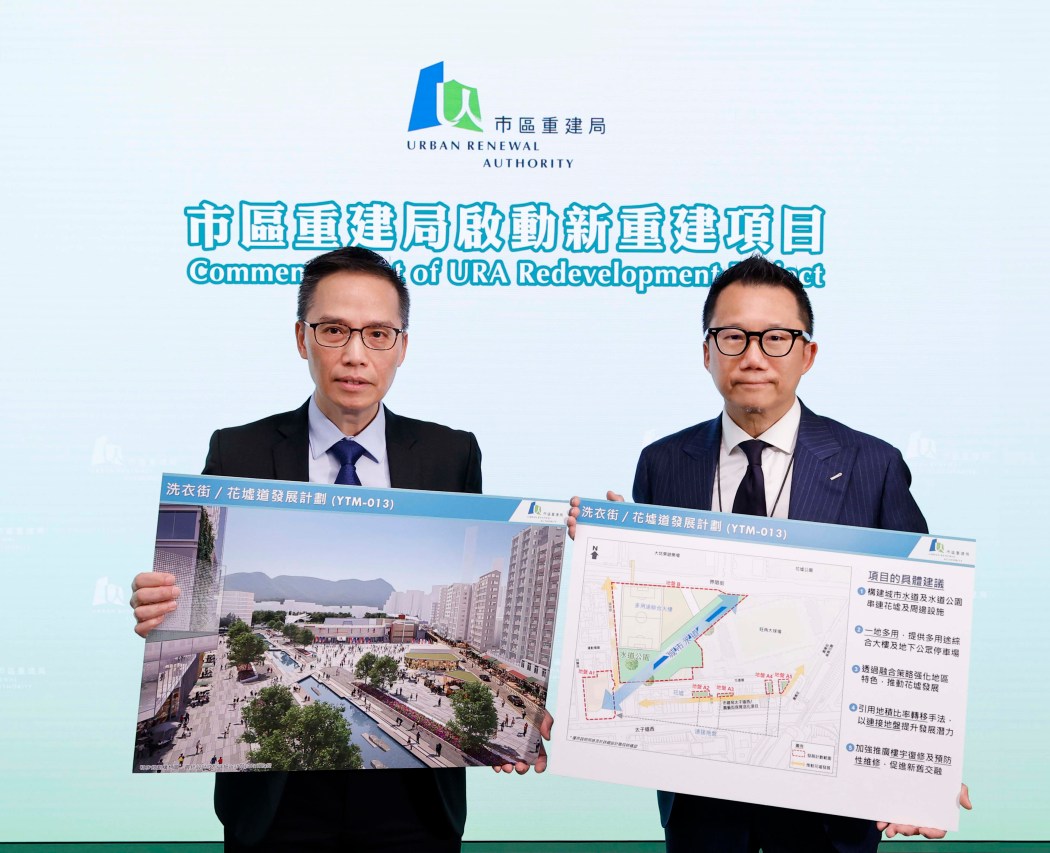

The professor Ng said she cannot understand the rationale to increase the density of the districts, which are already among the city’s most dense. She suggested the government should coordinate the city’s strategic development, instead of simply allowing the URA to redevelop districts via a project-based and self-financing approach.
“The government should have an overall coordination of the city’s development in the long-term – we’re not redeveloping one or two old buildings. It has become inappropriate to redevelop, replan a city with a URA approach, ” Ng said.
She added, “We talked about telling good Hong Kong stories, attracting overseas people to come visit. Then [authorities] have to apply strategic approach to remake the city, to make us feel proud, to make it full of stories here and there. If that’s the case, not only tourists, but even locals will want to stay in the city – it would be nice to walk through all 18 districts.”
Things money can’t buy
By early May, URA had conducted a survey to calculate the number of affected residents and merchants in Flower Market. It has submitted the draft development scheme and Social Impact Assessment reports to the Town Planning Board.
The board – if it deems it suitable – will publish the scheme before a two-month consultation period, during which the public can submit written opinions. The chief executive will then consider whether to approve it.
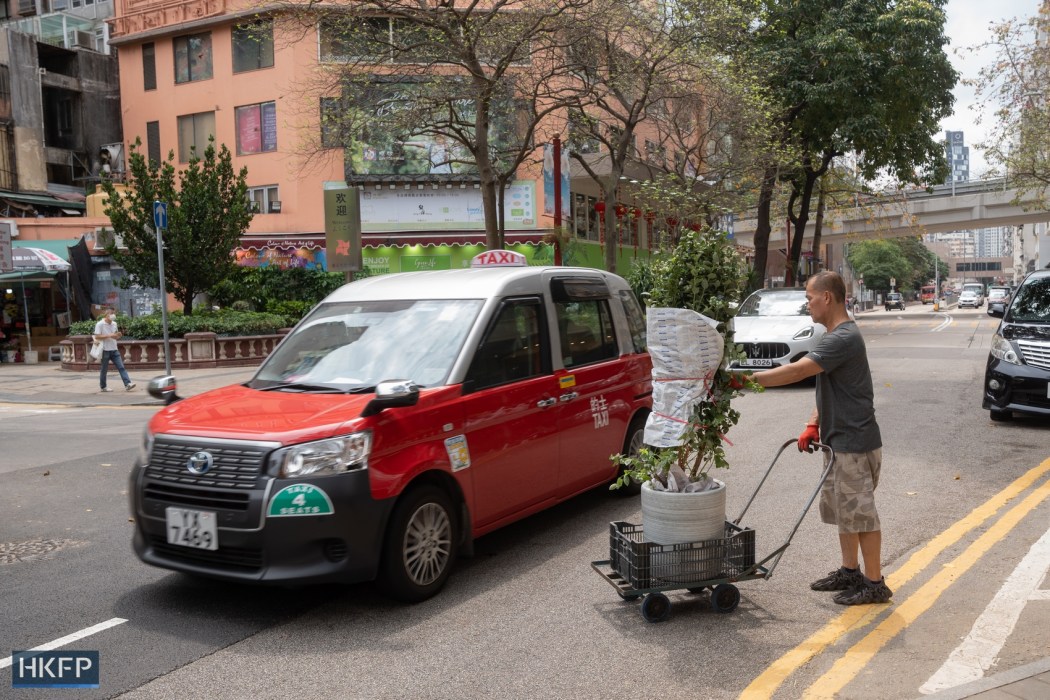

Mo said it would be hard to change the URA’s basic operating model and the Flower Market scheme in such a short period. He would meet lawmakers, professionals, residents and merchants to get suggestions on how to improve details.
He hoped the authority would give more consideration to supporting residents of old buildings and listen to different stakeholders.
“My apartment is now 50 years old and facing water leakage issues. By the time the scheme is completed, it will be a 60-year-old building…” Mo said, “Some people in the community have views in favour of redevelopment – some elderly people do want to leave, as they live in old apartments without lifts. What I want to do is to buy time. It would be a pity to rush through such a large plan in such a short period.”
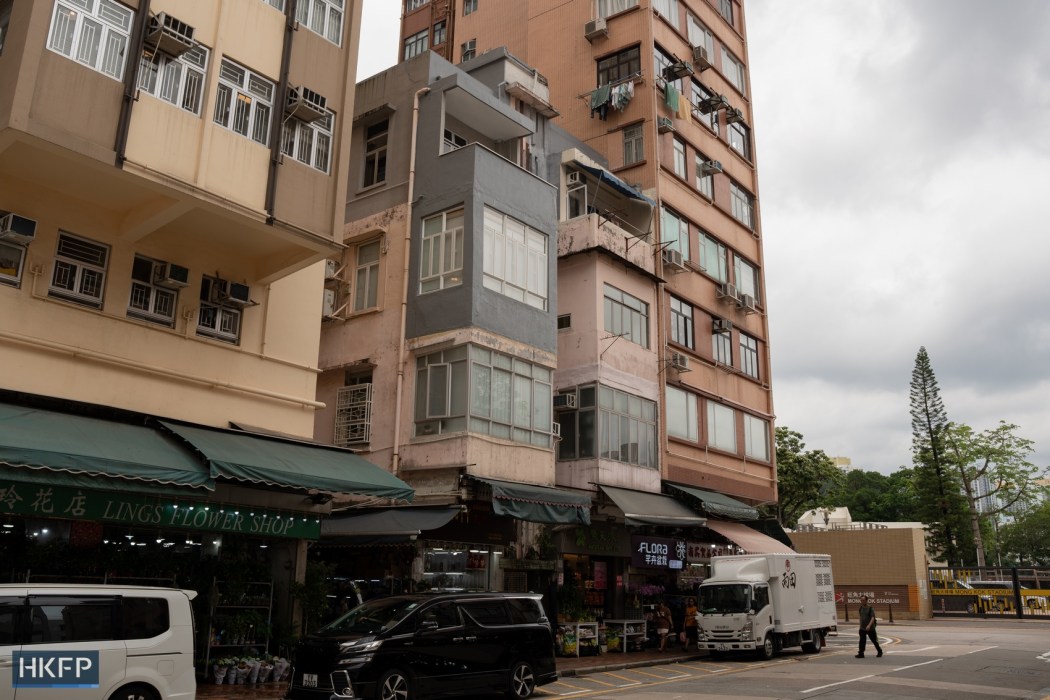

Joyce and her husband are also trying to make their voices heard. Along with some neighbours, they hope to draft a position paper and get signatures from residents in their apartment block.
Mo said some shop and apartment owners might see the development as beneficial.
“It is such a large-scale project, with shopping malls and grand commercial designs. And it will bring growth in the rental market and the real estate market in the district. We’ve seen such impacts in previous redevelopment schemes by the URA. ”
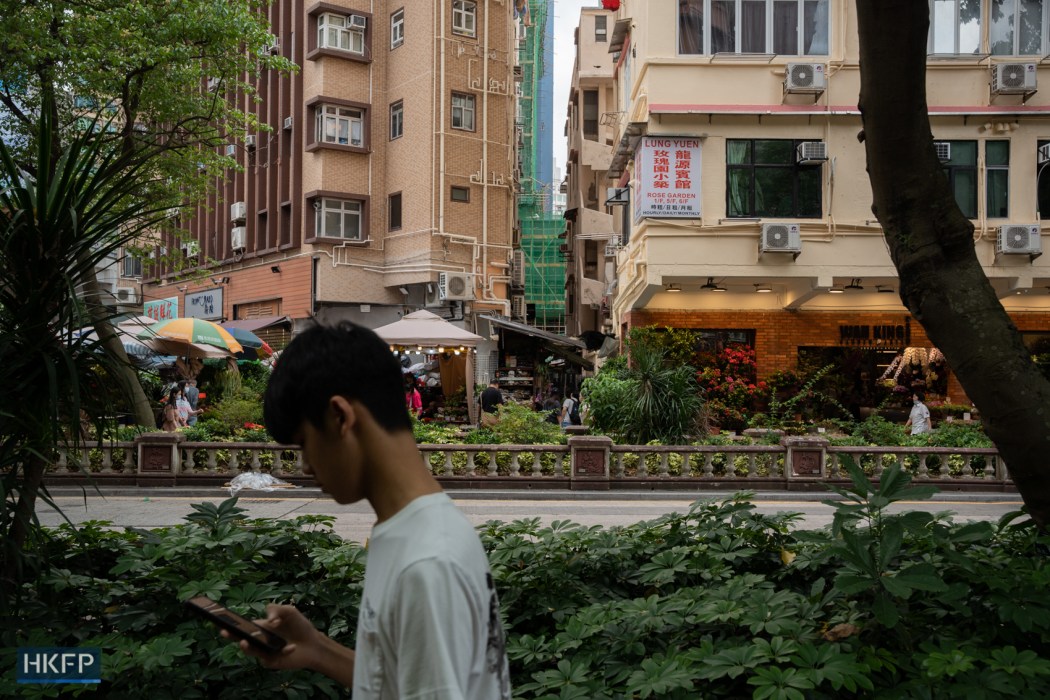

“But the Flower Market is not a property project. There are things money can’t buy. It’s a commercial environment, and many merchants are working hard here. What will happen to them? What if rent is increased significantly after the scheme is completed? There is no mechanism to respond to their needs, ” Mo said.
Joyce has written an email to Chief Executive John Lee to spell out her concerns.
“The Flower Market is a result of several decades of gradual development. The environment and the height of all buildings are harmonious. Will it remain the same after redevelopment? This is a question all of us care about. Have you heard our voices?” Joyce wrote in Chinese.
Two weeks later, she got a reply from the URA, sharing details of the scheme and how it aimed at providing facilities for residents “that are up to modern standards;” “boosting street vibrancy” and extending “the distinctive ambience and characteristics” of the market.
Stay tuned to HKFP this month for Part 2.
Support HKFP | Policies & Ethics | Error/typo? | Contact Us | Newsletter | Transparency & Annual Report | Apps
Help safeguard press freedom & keep HKFP free for all readers by supporting our team



